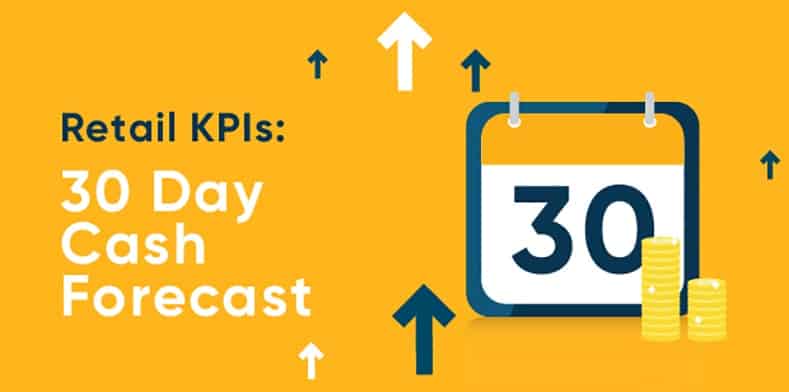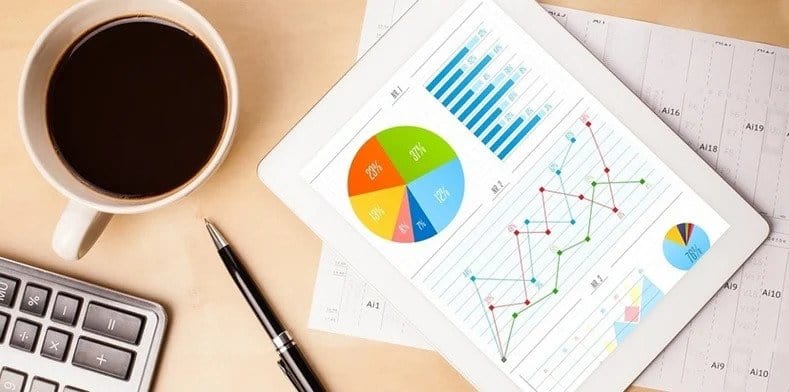The 30 Day Cash Forecast is a Retail KPI that can be implemented in any business. It’s also a metric that’s often avoided amongst younger businesses, perhaps due to perceived complexity, but more likely because it’s too difficult without a system.
In this article I’ll be covering the basics (you seasoned accountants out there, let’s talk landed costs or inventory costing!) of what a cash flow forecast is, what it means, and what actions you can take if it’s not healthy!
Cash forecast
To state the obvious, if you run out of cash, you’re in trouble. You won’t be able to pay your bills, or purchase more inventory to sell to bring more cash in.
Of course it’s not just about spending, you also need to ensure that you’ve always got enough to cover other overheads, such as salaries.
On the flip side, having too much cash can also be potentially damaging, as you could be missing opportunities and getting left behind in the market.
A successful business that thoroughly understands its cash flow can confidently spend on growth activities such as marketing or product sourcing, without the risk of missing its bill payments. Being in control of your cash does not simply mean knowing what’s in your bank account at all times.
Businesses run on a certain level of credit and payment terms, such as not having to pay your vendor for up to 30 days of receiving inventory from them. Additionally, a lot of businesses also sell on credit, such as giving your customers a 30 day period to pay you for items you’ve just shipped.
To know your cash position, you need a good handle on all debt, and when it’s due to be paid.
Just like knowing what’s in your bank account, these debts, or Accounts Receivable and Accounts Payable, only make up part of the picture. Sometimes, when you buy things, you’ll write a check or pay by credit card, which means that you’ve committed the cash, but it’s not yet left your account.
Your “real” cash balance needs to be tracked separately from the balance in your bank account.
To do so, you’ll need a simple cash measurement that you can monitor. This is where a 30 Day Cash Forecast comes in. Of course as with all KPI reports and high level metrics, they need to be fine-tuned to your business.
But the general idea behind this report is that you record all money thats due from your customers within 30 days, along with all of your debts to vendors that are due within 30 days, and any cash movements that are due to clear.
Take the total and add it to your current bank balance to land at your 30 day forecast.
Let’s look at an example of this in action:
Current cash balance: + $3,865
Money due from customers: + $24,000
Money due to vendors: – $13,347
Vendor checks not yet cleared: – $1,000
30 day cash position: $13,518
Again, a very simple approach that needs tweaking for your situation. Being a forecast metric, you should always retrospectively judge it’s results on the 30th day – if the forecast was wildly off then you need to amend your formula.
A fairly common attribute that gets included is a ‘Late payments’ buffer, which can cover the variance between the customer debt owed and the amount that was actually received.
Analyzing the result
The 30 day cash forecast is intended to keep you on the safe side of going bust, so technically as long as it’s positive, you’re going to have cash in the bank in a month’s time. In reality, you’ll want to set your own minimum safety margin based on your particular business.
Free cash also gives you flexibility to react – imagine if one of your products received great PR but all your cash was tied up in another item on your warehouse floor!
Since it’s a forward-looking measurement, the trending of the number is less important.
To see whether you are gradually headed towards a cash shortage (even though the forecast says you’re going to be fine in 30 days’ time), you simply need to look at the average cash balance in the bank.
What actions can be taken to improve it?
If the number is below zero, you may be heading towards a cash-out scenario, especially if you don’t get payment from all your customers on time.
In order to be efficient, you need to operate close to the line – which is why you need to know precisely where the line is. At the risk of stating the obvious, here are some ways to avoid a cash crisis:
- Spend less on inventory. In order to do this without jeopardizing future sales, you need some advanced inventory and sales reporting. Remember that inventory is just “cash in transit” – and anything you can do to spend less on inventory will boost your cash.
- Collect money from customers faster if you sell on credit. Ensure its easy for your customers to pay you, at any time. If you have an efficient way of contacting outstanding debtors then this can even be chased down on a targeted per-invoice basis.
- Incentivize your customers. Do this by allowing them to use payment methods that reach your bank account sooner, such as credit card or ACH rather than PayPal.
- Negotiate extended payment terms with vendors. Whatever you do, don’t just not pay them!
- Offer settlement discounts. The slight revenue hit might be well worth receiving cash sooner.




